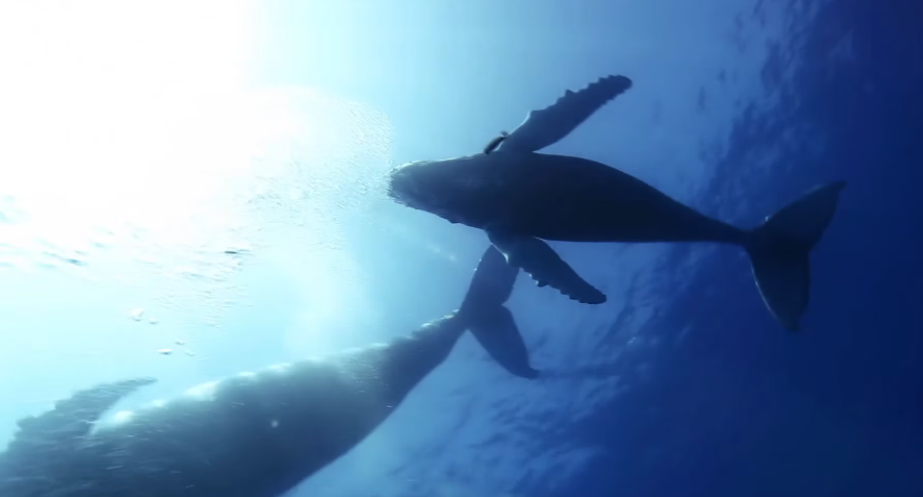How is Victoria’s climate changing?
Victoria's climate has changed in recent decades, becoming warmer and drier. These changes are expected to continue in the future. The image below shows current and projected climate change impacts for Victoria under a high emissions scenario.
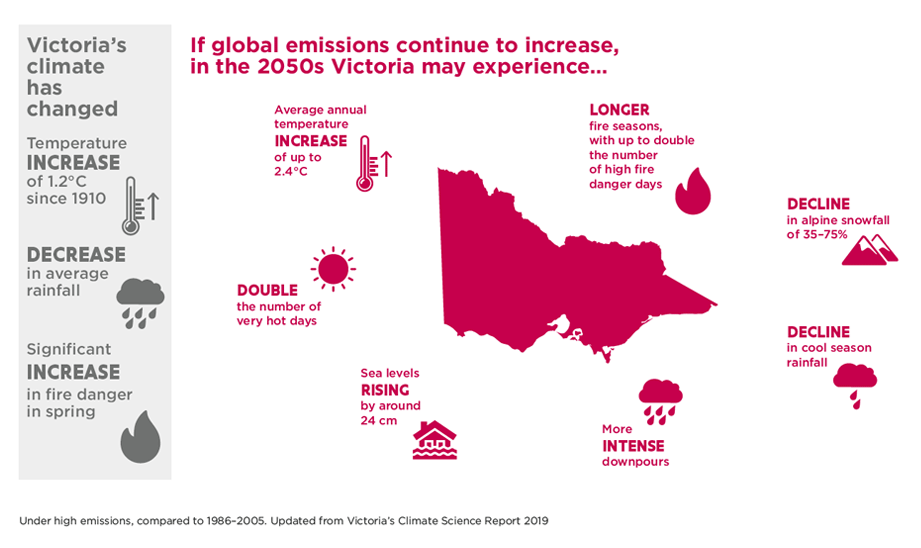
How will the natural environment be affected?
Australian plants and animals are adapted to a high degree of environmental variability. This includes cycles of hot and dry years followed by cool and wet years, and periodic fires and floods.
The fossil record shows that species can shift in response to climatic changes. However, there are limits to how much change plants and animals can adapt. Even the fastest rates of movement in the past are likely to be at least five times slower than the rate of projected climate change.
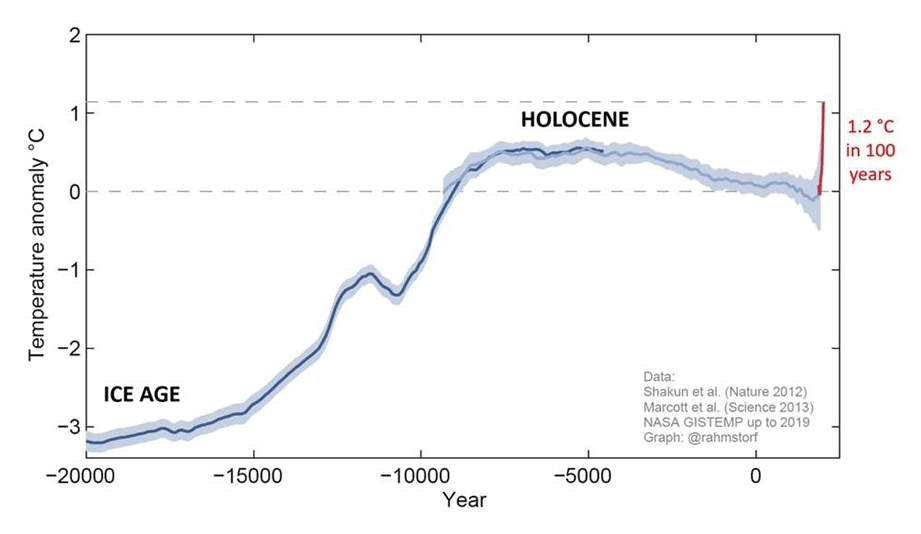
The planet has gone through alternating warm and cold periods (ice ages) over the last 2.6 million years.
The transition from the end of the last ‘cold period’ to the start of the ‘warm period’ took 9,000 years and involved global warming of 5°C.
Even if global warming is limited to 1.5°C, the rate of change will be 25 times faster.
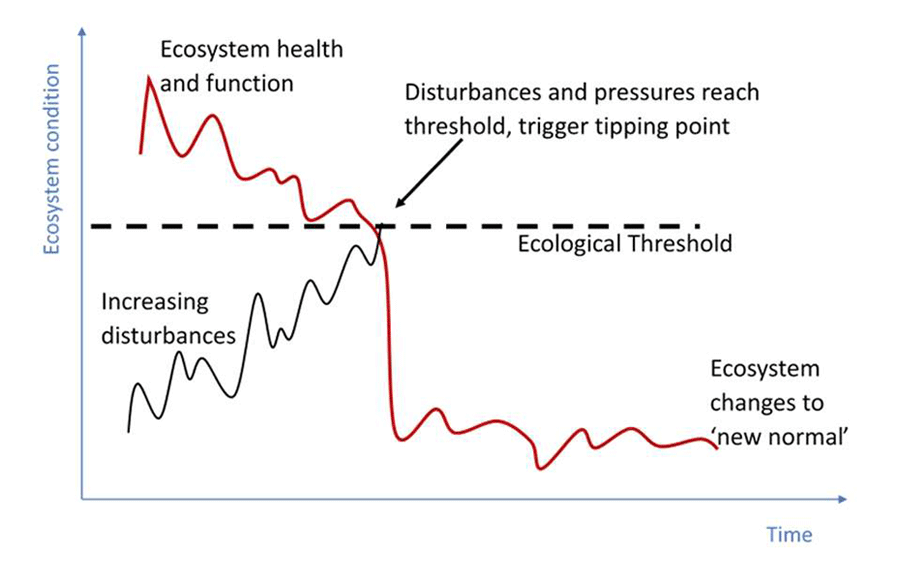
Some changes to the natural environment will occur slowly while others will be more sudden.
Over time, we will see some species disappear from certain places and be replaced by others (including weeds and pests) so that a new type of landscape emerges. Other changes will occur quickly within a matter of weeks or months.
Gradual changes and sudden events can each trigger tipping points, leading to permanent irreversible changes to ecosystems.
Distribution
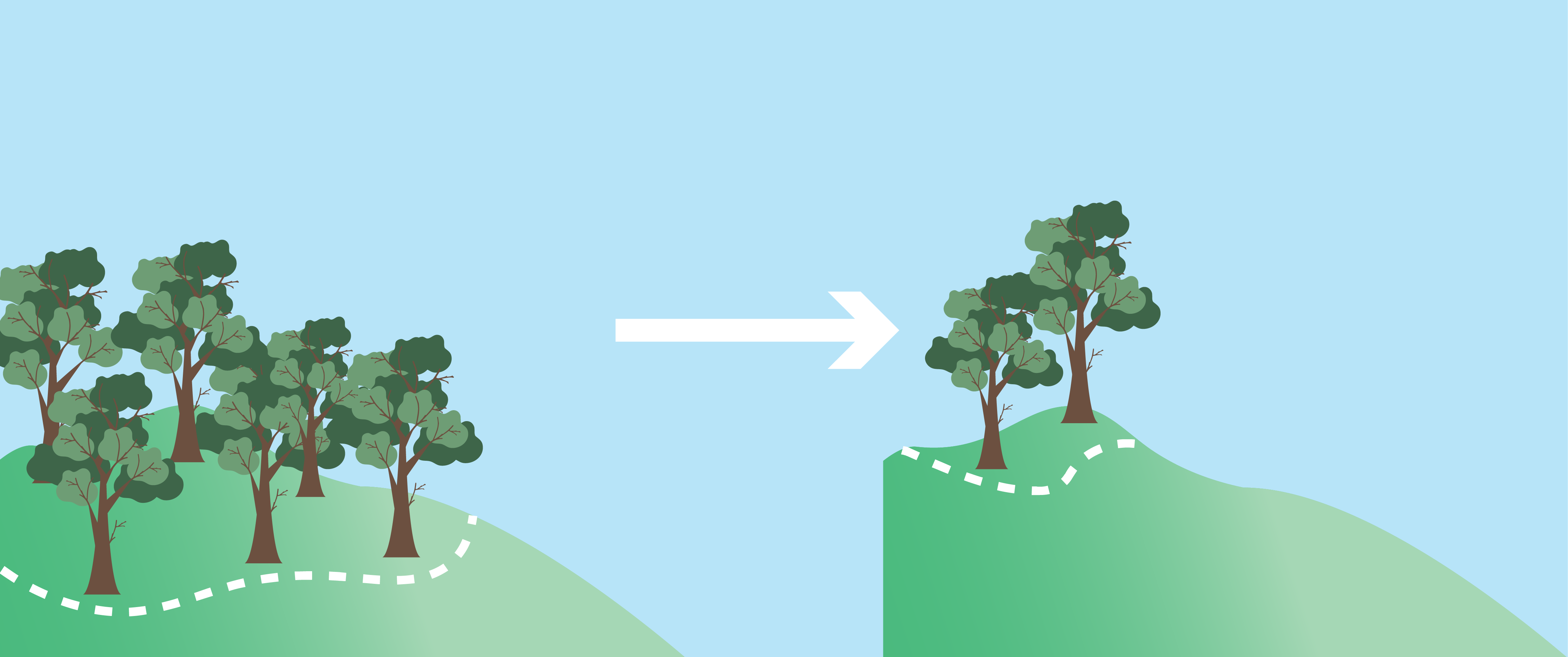
Composition
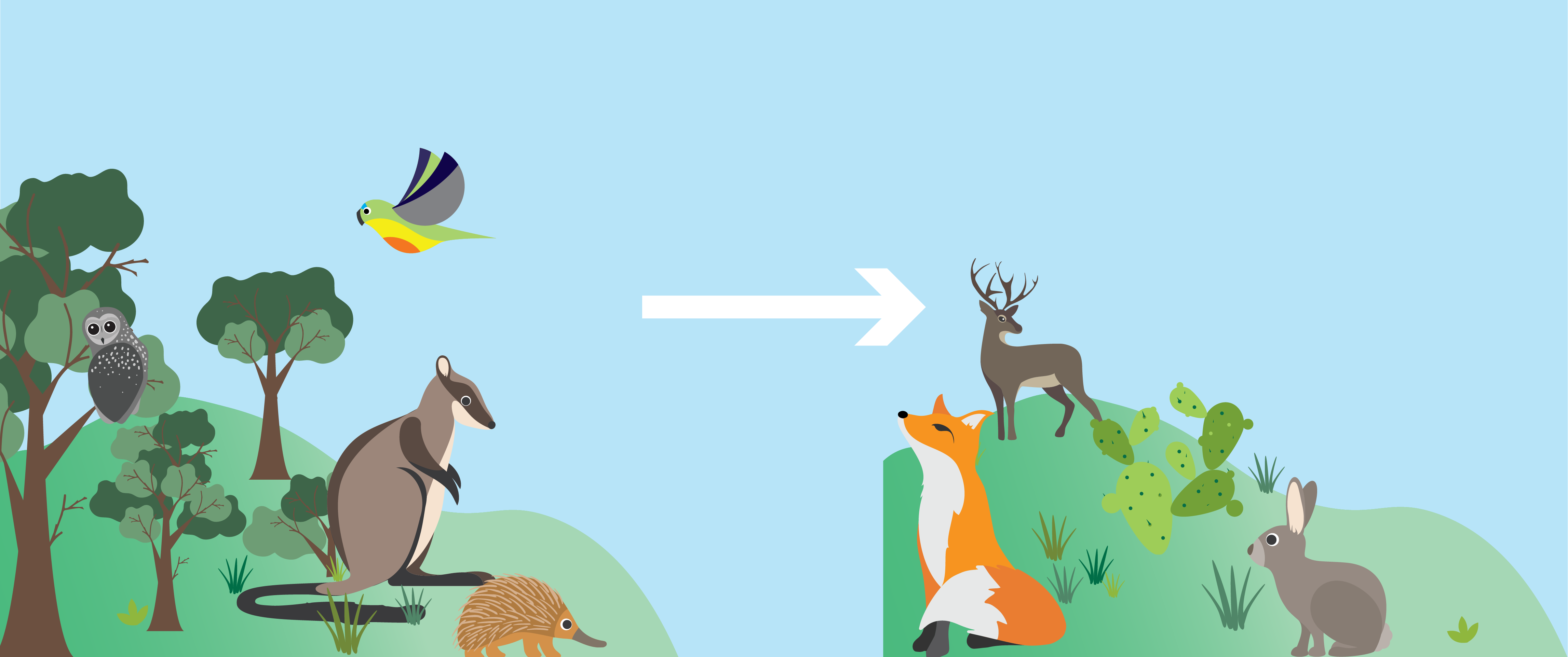
Structure
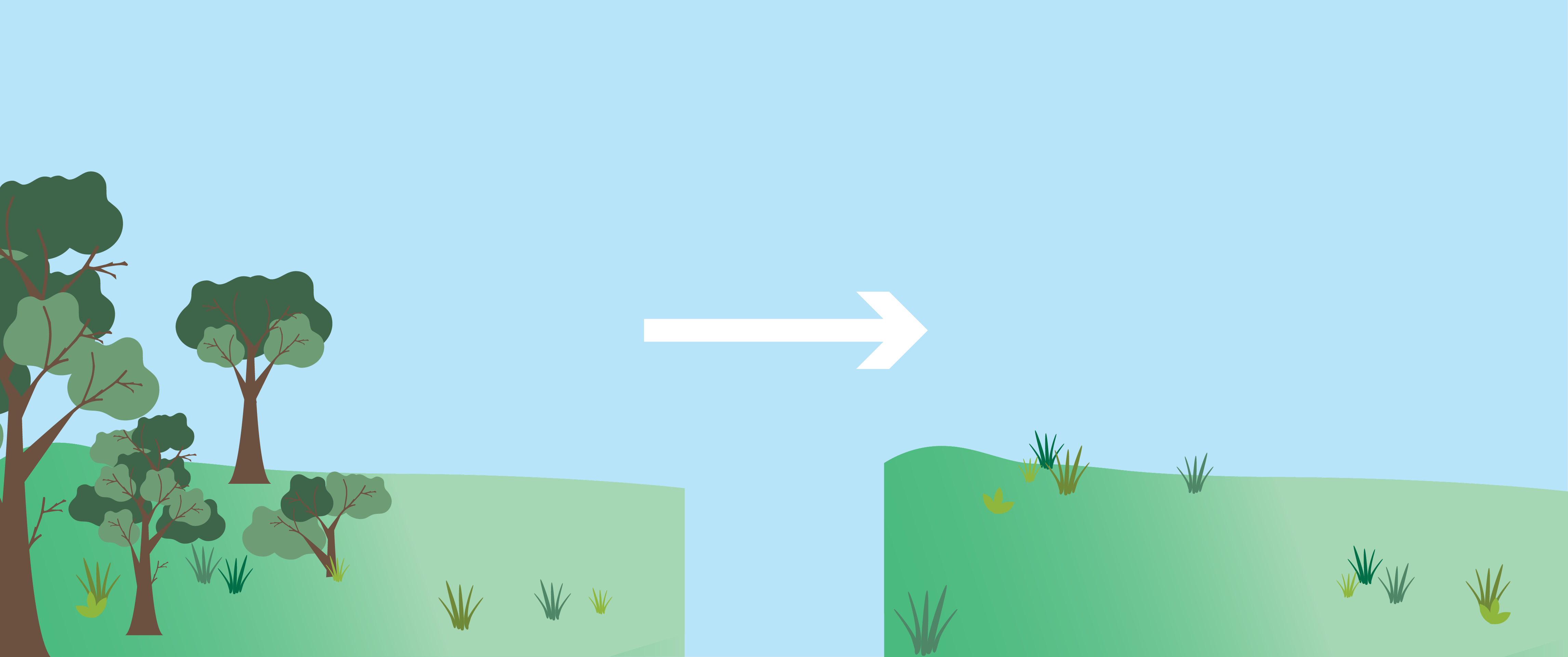
Function
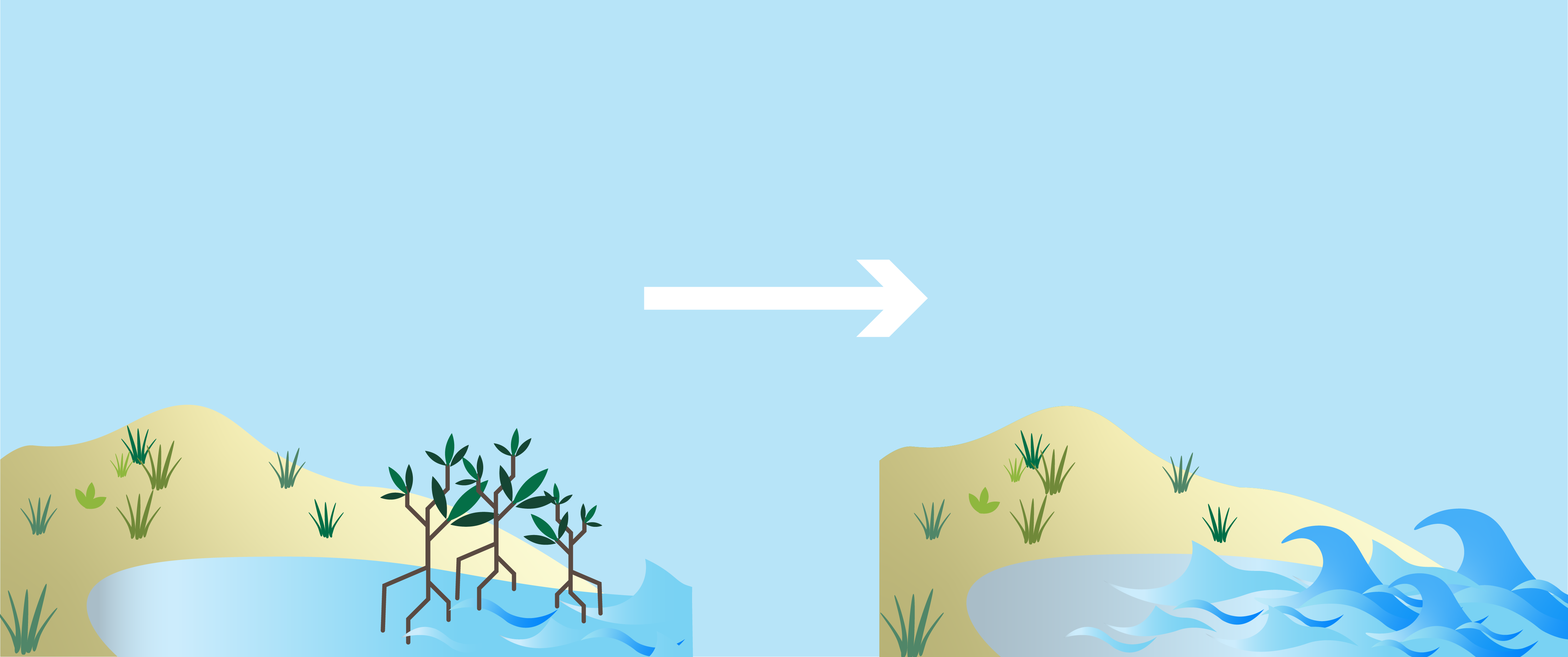
We know that climate change is likely to result in changes to the distribution, composition, structure and function of ecosystems.
Knowing which ecosystems will be affected, when and how is more difficult.
Why are impacts uncertain?
Firstly, there is a lot we don’t know (and might never know) about plants and animals. For instance, our understanding of the physiology, demography and genetics of many species is limited.
![]() Physiology is the study of how plants and animals function. Physiological characteristics (such as temperature tolerance) affect survival, growth, development, movement and reproduction. Species with a narrow environmental tolerance could be particularly vulnerable to climate change.
Physiology is the study of how plants and animals function. Physiological characteristics (such as temperature tolerance) affect survival, growth, development, movement and reproduction. Species with a narrow environmental tolerance could be particularly vulnerable to climate change.
![]() Demography is the study of populations and how they change due to birth, death and migration. Demographic variables, such as whether a plant survives to reproductive age, affect population numbers. Species whose young need special conditions to survive and grow could be particularly vulnerable to climate change.
Demography is the study of populations and how they change due to birth, death and migration. Demographic variables, such as whether a plant survives to reproductive age, affect population numbers. Species whose young need special conditions to survive and grow could be particularly vulnerable to climate change.
![]() Genetics is the study of genes and how traits might be passed along generations. Genes can determine whether an individual tolerates future climatic conditions. Species without high genetic diversity could be particularly vulnerable to climate change.
Genetics is the study of genes and how traits might be passed along generations. Genes can determine whether an individual tolerates future climatic conditions. Species without high genetic diversity could be particularly vulnerable to climate change.
A lack of key biological information makes it difficult to predict if or how a species will be able to adapt to changing environmental conditions.
Secondly, species are connected through complex relationships.
We have a relatively good understanding of food webs (‘what eats what’ in an ecosystem) and how differences in fire frequency or average rainfall have affected the distribution of plants and animals today.
We have a more limited understanding of other relationships, such as competition and pollination, and how they will be affected by climate change.
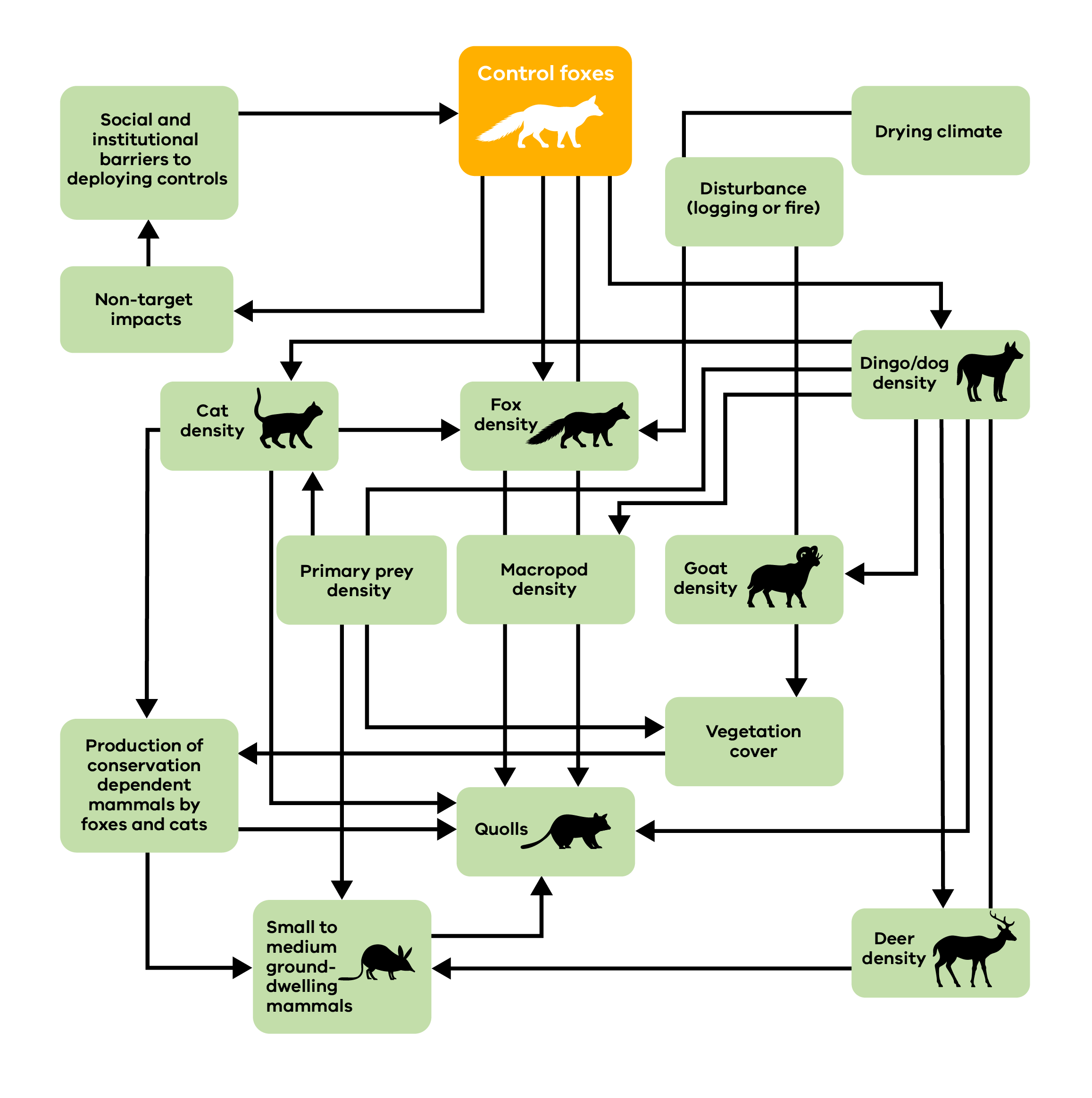
Thirdly, the degree to which ecosystems are exposed to climate change will vary across Victoria.
This means we can’t assume the same type of ecosystem will be affected in exactly the same way across the state. Some forests along the Great Dividing Range were severely burnt in 2019–20.
Other forests along the same range were not burnt.
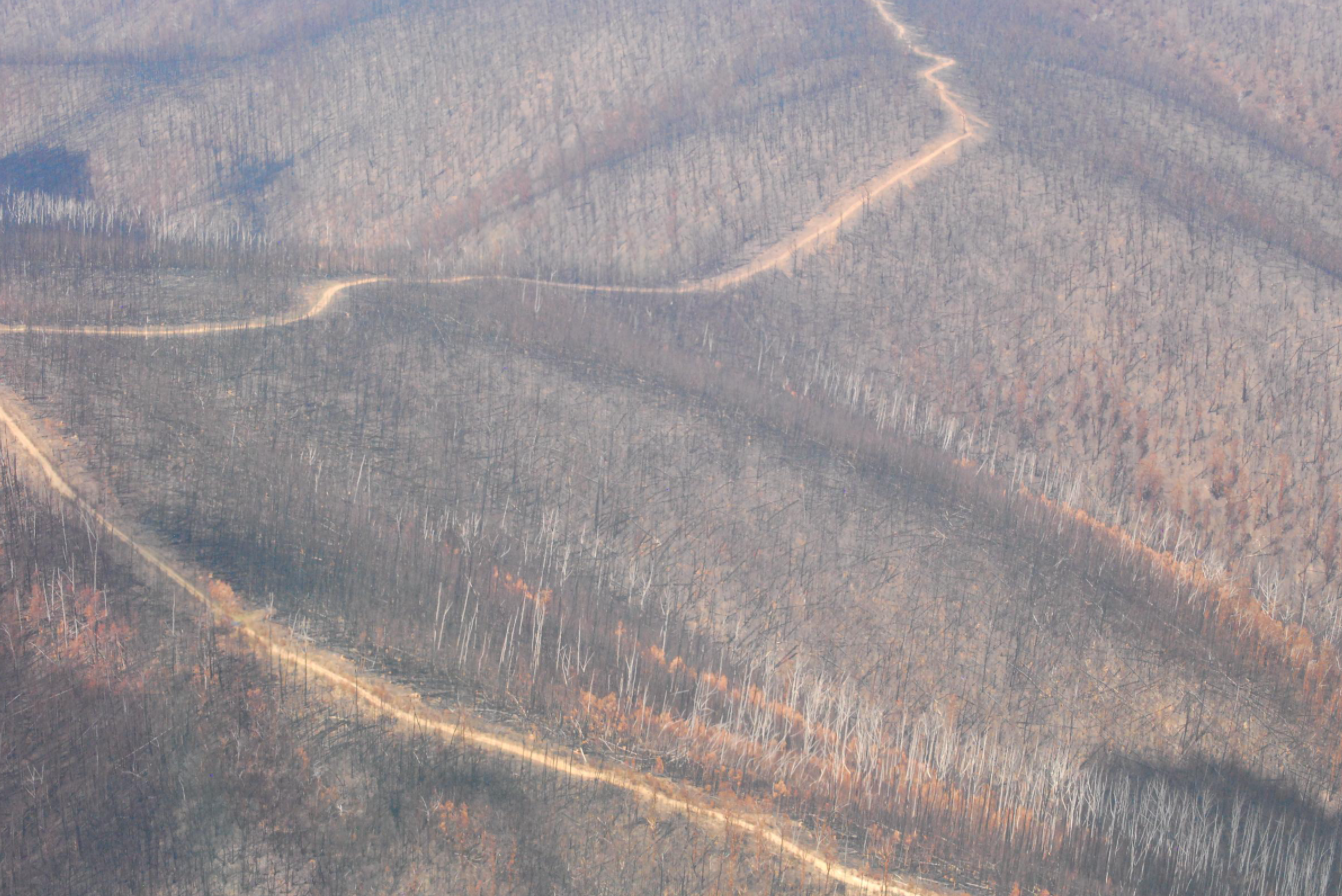
(Image source: DELWP)
Ecosystems have already been affected by stressors – such as habitat loss, invasive species and resource use – and will continue to be. The degree of impact will differ, even within the same ecosystem type. Climate change will compound the impacts but this will also vary across the state.
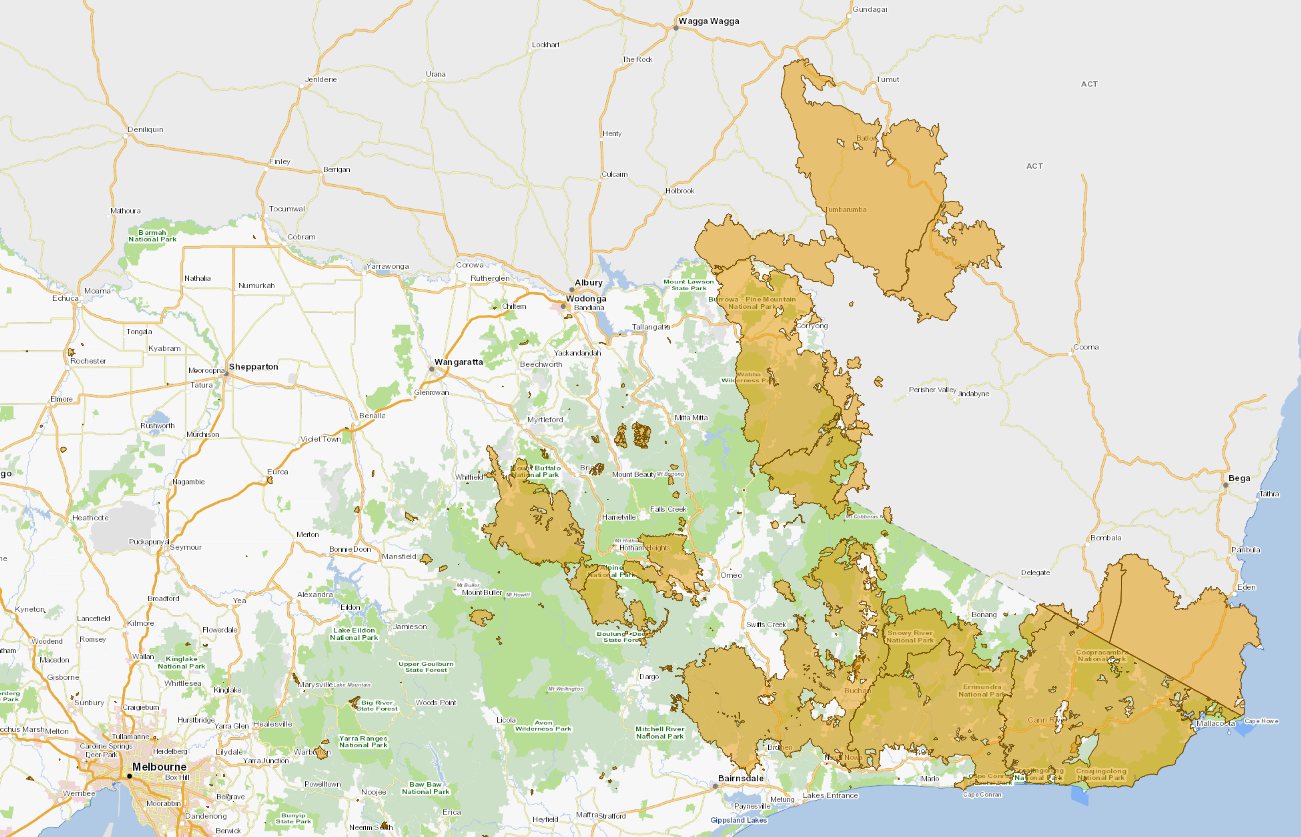
This map shows the extent of the 2019-2020 bushfires in Victoria and southern New South Wales.
Finally, the impact of climate change on the natural environment cannot be considered in isolation. Big societal changes, such as population shifts and technological advancements, are likely to affect the natural environment. The exact nature and timing of these impacts is unknown.
Perhaps most significantly, we don’t know how effectively worldwide greenhouse gas emissions will be reduced over the next 20, 50 or 100 years. The level of greenhouse gases in the atmosphere and when they peak will determine the degree of warming.
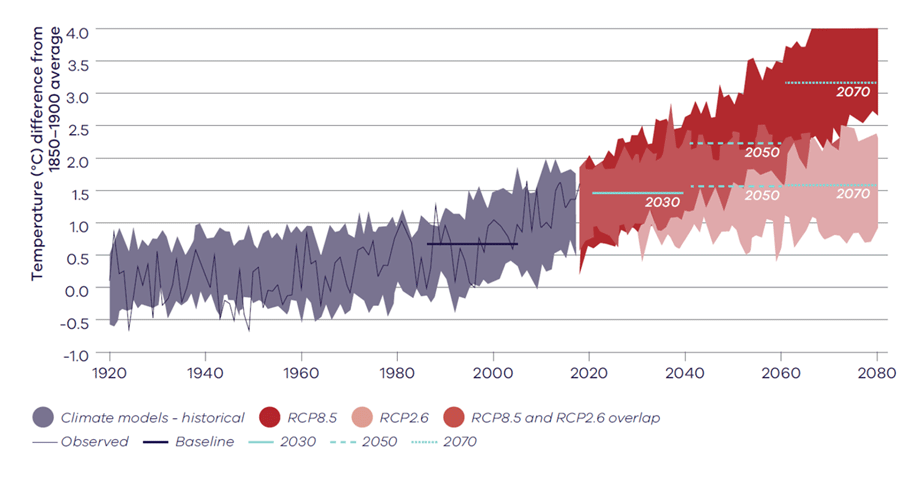
Warming of 1-1.5°C is likely to result in species vulnerable to climate hazards becoming extinct.
A rise of more than 2°C is likely to accelerate extinctions and result in significant ecosystem changes.
What is likely to occur?
While the natural environment is complex, and the impacts of climate change are uncertain, there is a lot we do know. We have already started seeing the effects of climate change particularly on fire, drought, reduced snowfall and increasing marine temperatures. These are likely to worsen over time.
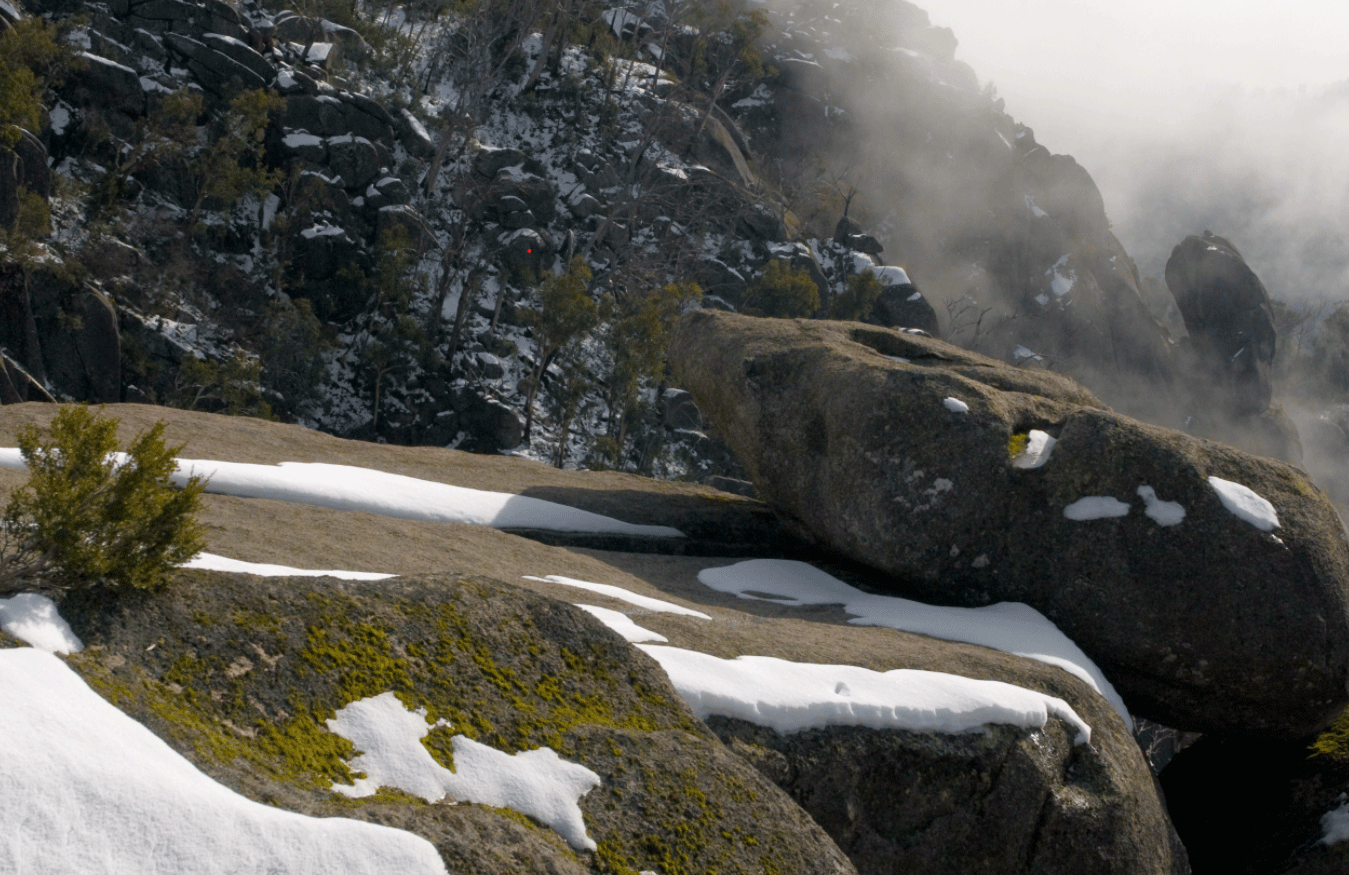
Alpine areas that depend on regular snowfall will be affected by reduced snowfall and increased snow melt. (Image source: Parks Victoria)
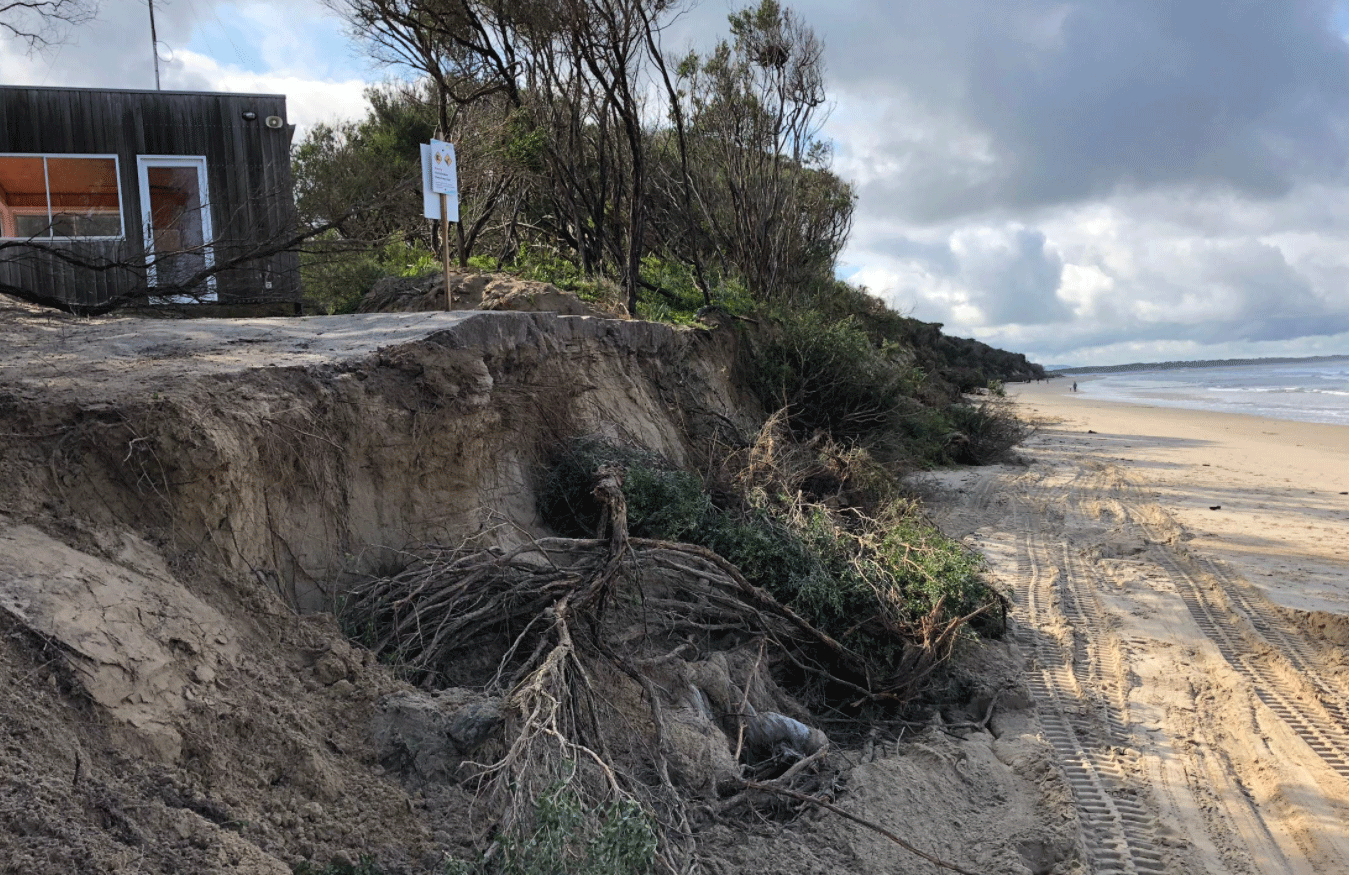
Coastal woodlands on established dune systems will be affected by increased storm surge. (Image source: Parks Victoria)

Forests that require long periods between fires to regenerate will be affected by more frequent fire. (Image source: DELWP)
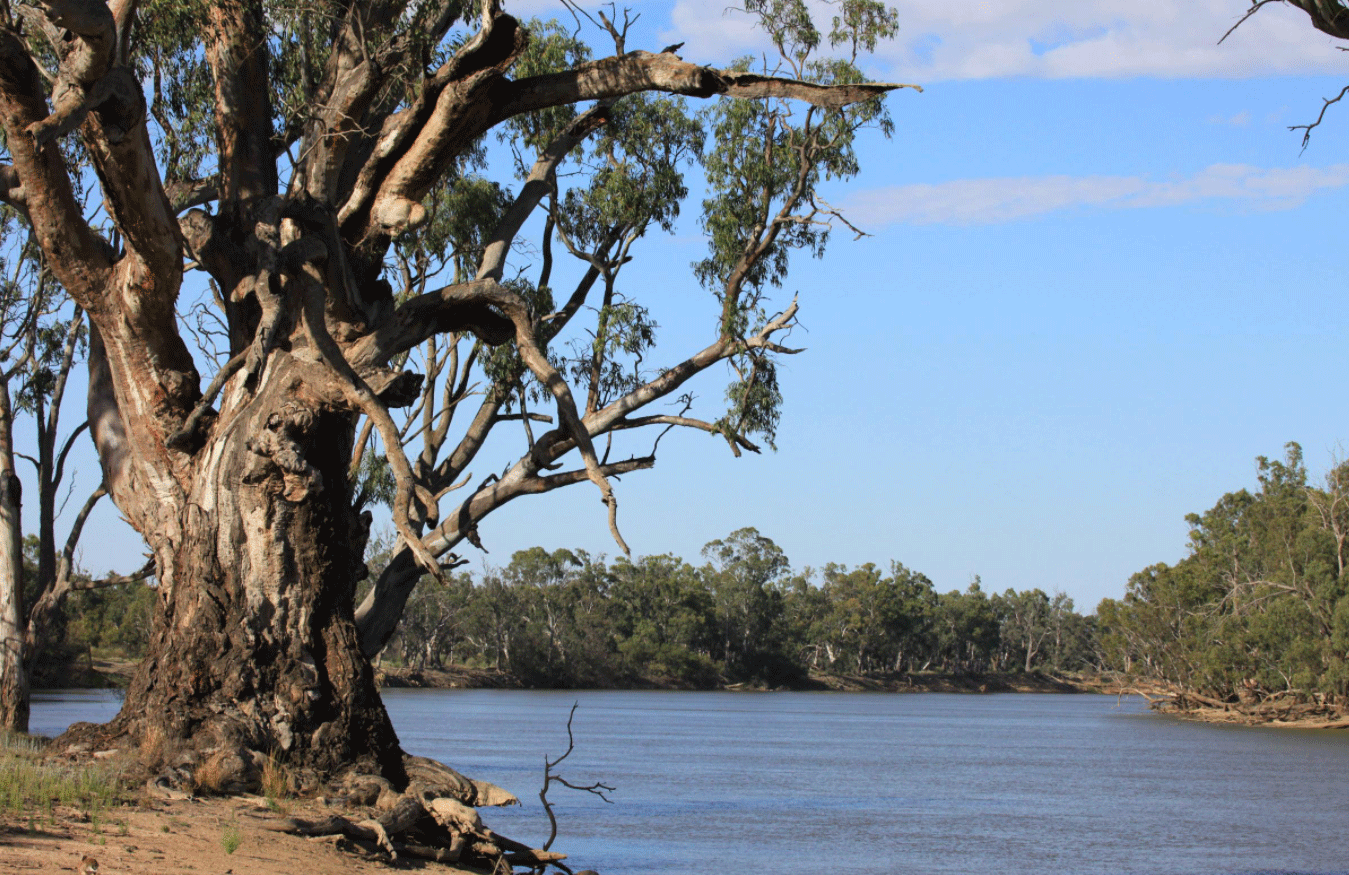
Waterways dependent on seasonal flooding will be affected by reduced winter rainfall. (Image source: Parks Victoria)
For some ecosystems and species, we don’t need to gather a lot more information to know how they are likely to be impacted by climate change.
Climate change will affect Aboriginal culture and practices including through loss of land and hunting ground, changing fire regimes, and fewer animals in the sea and creeks.
Likely impacts of climate change
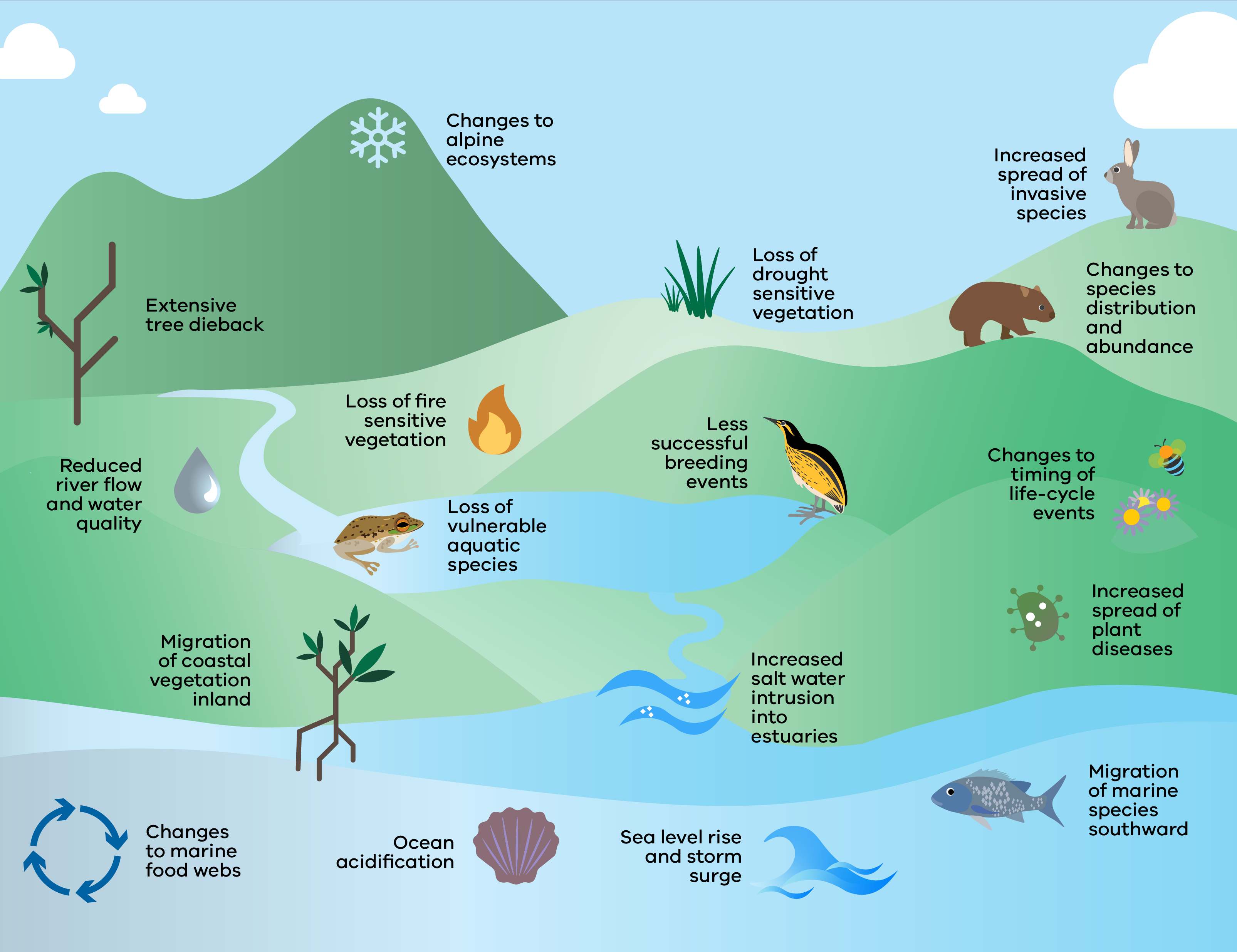
Changes to alpine ecosystems
In the Victorian Alps, snow cover has already diminished by about 50 per cent since the 1960s. Modelled future climate changes indicate that snow cover and volume are likely to decline significantly into the future.
Snow-dependent species and communities will become progressively vulnerable, including threatened species such as the Mountain Pygmy Possum.
It is also likely that rare alpine wetlands will disappear in some locations.
Tree dieback
Large scale canopy dieback in native forests has been increasing and is likely to continue as the climate warms. This is likely to result in landscapes with fewer trees and permanent shifts to species more tolerant of hot and dry conditions.
In recent years snow gums have been found to be dying at unprecedented rates due to infestations of Longicorn beetles, a native woodboring insect. These insects are not normally a threat to snow gums, but warmer, drier conditions are helping the beetles to breed and grow quickly. Eucalypts have incredible abilities to recover and regrow following fire and drought but there are limits.
Repeated drought and fire in many areas of snow gums in Victoria has left them without the energy reserves to fight off relatively minor infestations of fungus or insects.
Frequent fires impact sensitive plants and animals
Climate change is likely to increase fire frequency.
Some plant species are adapted to regular bushfires, but others may not be able to regenerate if there is not enough time between fires. Alpine Ash are an ‘obligate-seeder’, a plant that regenerates from seed after fire. Alpine Ash trees are not mature enough to produce seed until they area 20 years old and so they cannot regenerate when fires are too frequent. Since 2002, most of the Alpine Ash in Victoria have been burned by several large fires and many of the mature trees have been lost. This means that there are few stands with trees old enough to set seed. Repeat burning of Alpine Ash before it reaches maturity means that it will not be able to regenerate naturally.
Fire and weather are strong drivers of small mammal abundance. Some small mammal species, such as Southern Brown Bandicoots, require habitat that hasn’t been burnt for decades. As fires become more frequent due to climate change, these mammal species are likely to decline in abundance.
Wetland drying
Many Victorian wetlands are adapted to dry periods but do require regular flows of water and flooding.
Without regular flows and floods, wetlands can be lost and replaced by dryland vegetation. The most vulnerable inland wetlands are likely to be those along floodplains in western Victoria and parts of the Goulburn River catchment, wetlands in northern and western Victoria that rely on rain to fill them, and wetlands in the high Alps.
Less successful waterbird breeding
Climate change is expected to decrease flood frequency in major wetlands within the Murray-Darling Basin which will increase risks to colonial waterbird species such as egrets, herons and cormorants.
Colonial waterbird species living in forested wetlands in the Murray-Darling Basin usually require large flood events raise young.Wetlands must be inundated for enough time for young to grow old enough to leave the nest. If water levels drop before young are mature their parents may abandon them and they die.
Reduced river flow
Projected declines in cool-season rainfall and higher potential evapotranspiration are expected to reduce runoff to Victorian waterways.
What may seem like small changes in rainfall can have a big impact on streamflow – generally, a 10 per cent reduction in rainfall might lead to a 20 –30 per cent reduction in streamflow. Impacts are unlikely to be equal – reductions in streamflow since the beginning of the Millenium Drought (1997) were greatest in the central west of the State.
As the amount of water in river and wetlands decreases, water temperatures rise and dissolved oxygen levels decrease. Under these conditions, the risk of toxic algal blooms and fish death increases.
Invasive species
Overall, warmer drier conditions are expected to benefit weeds and pests when compared with native species.
The characteristics that make many weeds and pests invasive, for instance that they can tolerate a broad range of environmental conditions and can breed quickly, will help them exploit new opportunities.
Introduced plants species that are currently not considered to be weeds could become problems in the future as the environment changes.
Changes to terrestrial species' distribution and abundance
Climate change will impact the distribution and abundance of species. This can be hard to predict, but species with limited dispersal abilities, small geographic ranges, or confined to specialised habitats are likely to be particularly vulnerable.
In mountainous areas it is expected that species will move to higher elevations. However, there is limited opportunity for most Victoria species to do this because the land is relatively flat. Species already at high elevations may have ‘nowhere else to go’.
The Gang-gang Cockatoo and Flame Robin which breed at higher elevations are already showing signs of decline as warmer temperatures are shrinking the area suitable for breeding.
Changes to timing of life-cycle events
Many species rely on the timing of life-cycle stages to ensure optimal environmental conditions for growth and breeding, such as abundant food for raising young or flowering to coincide with pollinator emergence. Changes to the timing of life-cycle events within one species can has flow-on effects to the other species that depend on it.
Warmer temperatures have been shown to alter timing of flowering in alpine species on the Bogong High Plains but responses vary between species. Some species are flowering earlier, and some showing changes in when seeds reach maturity.
Evidence suggests that since the 1960s some migratory birds visiting or breeding in south-eastern Australia are arriving earlier. There is substantial evidence that arrival dates in general are related to local temperatures.
Increased spread of plant diseases
Increased heat and decreased water availability have altered the composition of forests and the spread and impact of pathogens, disease and pests.These conditions are likely to continue to worsen, promoting increased spread of plant diseases.
For example, it is expected that wetter summers and warmer winters will enable the plant disease Phytophthora to spread further in Victoria potentially leading to significant biodiversity loss.
Migration of marine species southward
Climate change is likely to result in increased ocean temperatures and more frequent marine heatwaves. As the ocean warms, it is expected that many marine species will migrate southward to cooler waters.
In Victoria, some changes are already being observed including the southern migration of seaweed to cooler waters and a southward extension in range of 15 per cent of coastal fishes in temperate south-eastern Australia.
The southern migration of sea urchins from New South Wales has led to a loss of kelp forests, destroying vital habitat for fish and abalone.
Increased salt water intrusion into estuaries
Saltwater intrusion is where saltwater extends further upriver into freshwater rivers as well as into groundwater.
Climate change is likely to increase saltwater intrusion due to decreased rainfall and streamflow and rising sea levels.
This may result in estuary entrances being open more to the sea. This will impact the plants and animals that live in them.
Migration of coastal vegetation inland
As sea levels rise, marine and coastal habitats like mangroves and saltmarsh must migrate landwards to survive. Where there are built structures (like roads, concrete paths and levee banks) adjacent to coastal vegetation it will be unable to move further inland.
The coastal wetlands around Port Phillip and Western Port Bays are vulnerable because of this. Coastal wetlands south of the Otways and along the far east coasts may be vulnerable due to natural barriers created by the shape of the land and coastline. Loss of mangroves and saltmarsh has significant flow-on effects because they filter water and improve its quality, prevent erosion, are important nursery habitats for fish and crustaceans, and provide roosting habitats for shorebirds (including the rare orange-bellied parrot).
They also sequester carbon out of the atmosphere at a much faster rate than the planet's forests and can continue to do so for millions of years.
Sea level rise and storm surge
Climate change projections show that sea levels will continue to rise, and storms will be more frequent and intense.
Sea level rise will alter mangrove and saltmarsh habitats and lead to a loss of coastal habitats for biodiversity such as roosting or nesting sites for shorebirds. The increased intensity of storms along the coast will result in greater inundation of low-lying coastal environments. The most vulnerable areas are beach fronts, low-lying wetlands and coastal reserves.
Changes to the direction of waves will affect the pattern of sediment movement and erosion along Victoria’s coastline which could impact plant and animal species that currently live there.
Ocean acidification
Globally, surface waters are now 30 percent more acidic than they were at the start of the industrial era.
Ocean acidification is now happening at a faster rate than at any point in the last 66 million years. When seawater absorbs carbon dioxide, chemical reactions occur, resulting in a greater concentration of hydrogen ions. This causes the seawater to become more acidic and for carbonate ions to be relatively less abundant.
Carbonate ions are the building blocks for many marine animals such as bryozoans, oysters, molluscs, crustaceans and echinoderms, helping them to produce shells and skeletons.
Plankton, which form the basis of many marine food chains, also require carbonate to build shells and skeletons.
These types of marine animals species may decline as a result of ocean acidification.
Changes to marine food webs
Increasing ocean temperatures and ocean acidification are likely to reduce the productivity of phytoplankton that form the basis of marine food webs.
Phytoplankton are consumed by zooplankton (tiny animals), which in turn provide food for small fish, all the way up the food chain to top predators like dolphins and sharks. Plankton influence the pace and extent of climate change. They produce chemicals that assist in the formation of clouds, plus through photosynthesis transport carbon to the deep ocean.
Key issues
This section highlights some key issues for the natural environment system. These issues have been selected because they are likely to have significant impacts on the natural environment system and involve other systems. These are examples of ‘cross-system risks’.
Managing cross-system risks requires collaboration across systems. For more information on other cross-system risks that impact on the natural environment system please see the supporting documents.
Bushfires
Climate change will increase the risk of more severe and frequent bushfires. This is likely to mean that a larger area is burnt in a single fire season and fires occur in places that didn't historically burn. This will have direct and indirect effects on the natural environment as well as human systems.
The natural environment, such as forests and grasslands, increases the bushfire risk to nearby infrastructure and settlements. Managing this risk through prescribed burning and other fuel reduction activities affects the natural environment both positively and negatively. These activities will need to intensify to keep pace with increasing bushfire risk. Why communities are vulnerable and what else could be done to reduce this risk might need to be considered. Transformational approaches might be required.
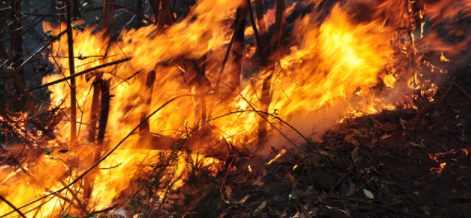 The 2019–20 fires were reported as 'without precedent'. Several warming scenarios will see the weather experienced in summer 2010–2020 as the 'average summer' by 2050. (Image source: Parks Victoria)
The 2019–20 fires were reported as 'without precedent'. Several warming scenarios will see the weather experienced in summer 2010–2020 as the 'average summer' by 2050. (Image source: Parks Victoria)
Other affected systems
- Built environment
- Education and training
- Health and human services
- Primary production
- Transport
- Water cycle
Disease
The impact of climate change on the spread of disease is uncertain. Like other living things, organisms that spread disease have ideal conditions for growing, reproducing and spreading. Warmer temperatures will enable some of these organisms to grow and reproduce faster, while others might not survive.
Climate change is also likely to affect the health of disease hosts, including humans, notably through heatwaves and heat stress. This could make hosts more susceptible to infection or harm from disease and parasites.
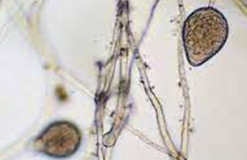
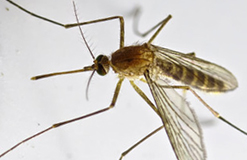
Other affected systems
- Built environment
- Health and human services
- Primary production
Weeds and pests
Changing temperature, wind and rainfall patterns along with more extreme weather events will likely affect how weeds and pests spread and how abundant they are. As for native species, it can be difficult to predict which weed and pest species will benefit from a changing climate.
Overall, warmer drier conditions are expected to benefit weeds and pests when compared with native species. This is because:
- climate change will make many ecosystems more vulnerable to invasion
- the characteristics that make many weeds and pests invasive (e.g. able to breed quickly and tolerate a broad range of environmental conditions) will help them exploit new opportunities.
As the climate changes, it will be important to detect new threats as early as possible to provide the best chance of successful intervention. This includes the arrival of new weeds and pests into Victoria, and existing species expanding their range or impact.
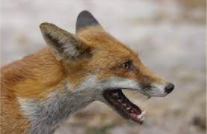 In the Australian Alps, foxes have become more common at higher altitudes as the climate has warmed. As snow cover declines, native animals are becoming easier for foxes to find. (Image source: DELWP)
In the Australian Alps, foxes have become more common at higher altitudes as the climate has warmed. As snow cover declines, native animals are becoming easier for foxes to find. (Image source: DELWP)
Other affected systems
- Built environment
- Primary production
- Transport
Marine ecosystem change
Climate change is likely to increase ocean temperatures and acidity and cause more marine heatwaves. This will significantly affect Victoria’s marine ecosystems.
Many species are migrating southwards in response to increased temperatures. However, some might be limited by the lack of suitable habitat south of the Australian mainland.
Increased ocean acidity will affect which species can survive. Changes to the composition and abundance of marine species, particularly plankton, might disrupt fundamental processes such as nitrogen cycling and reduce the ocean’s ability to store carbon. This has significant implications for the natural environment and human systems.
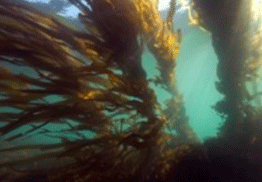
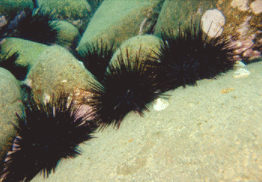
Climate change has enabled the southern migration of Black-spined Sea Urchins, which have devastated kelp forest.
Other affected systems
- Primary production
What is ocean acidification?
View this video on the Coastal Acidification - Rate, Impacts and Management (CARIM) website.
Will the environment adapt on its own?
The natural environment has some capacity to adapt to climate change on its own, but its ability to do so varies across ecosystems and species.
For instance, some ecosystems will:
- be resistant – they will be able to withstand climate-related impacts and remain essentially unchanged
- be resilient – they will be impacted but have the ability to recover
- transition – they will be impacted and will not recover to their previous state. For instance, they could change structure or composition and, in some cases, even become a ‘novel’ ecosystem.
To give species and ecosystems the best chance we need to reduce the other pressures on them, such as invasive species and habitat loss. However, we also need to consider what options are available for species and ecosystems that may be significantly impacted by climate change. In some instances, we may have to facilitate or accept a transition to something new.
We need to act now to identify potential tipping points and minimise their consequences on our economy, society and the environment. If we wait until changes are obvious, it might be too late to intervene and the consequences could be severe.
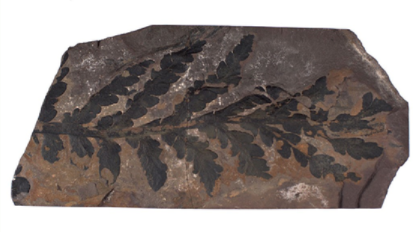 Fossil evidence shows that plant species have migrated in response to past climate changes.
Fossil evidence shows that plant species have migrated in response to past climate changes.
However, to keep pace with human-induced climate change, the plant species would have to move 5 to 50 times faster than they have in the past. (Image source: Museums Victoria)
Page last updated: 15/06/23
